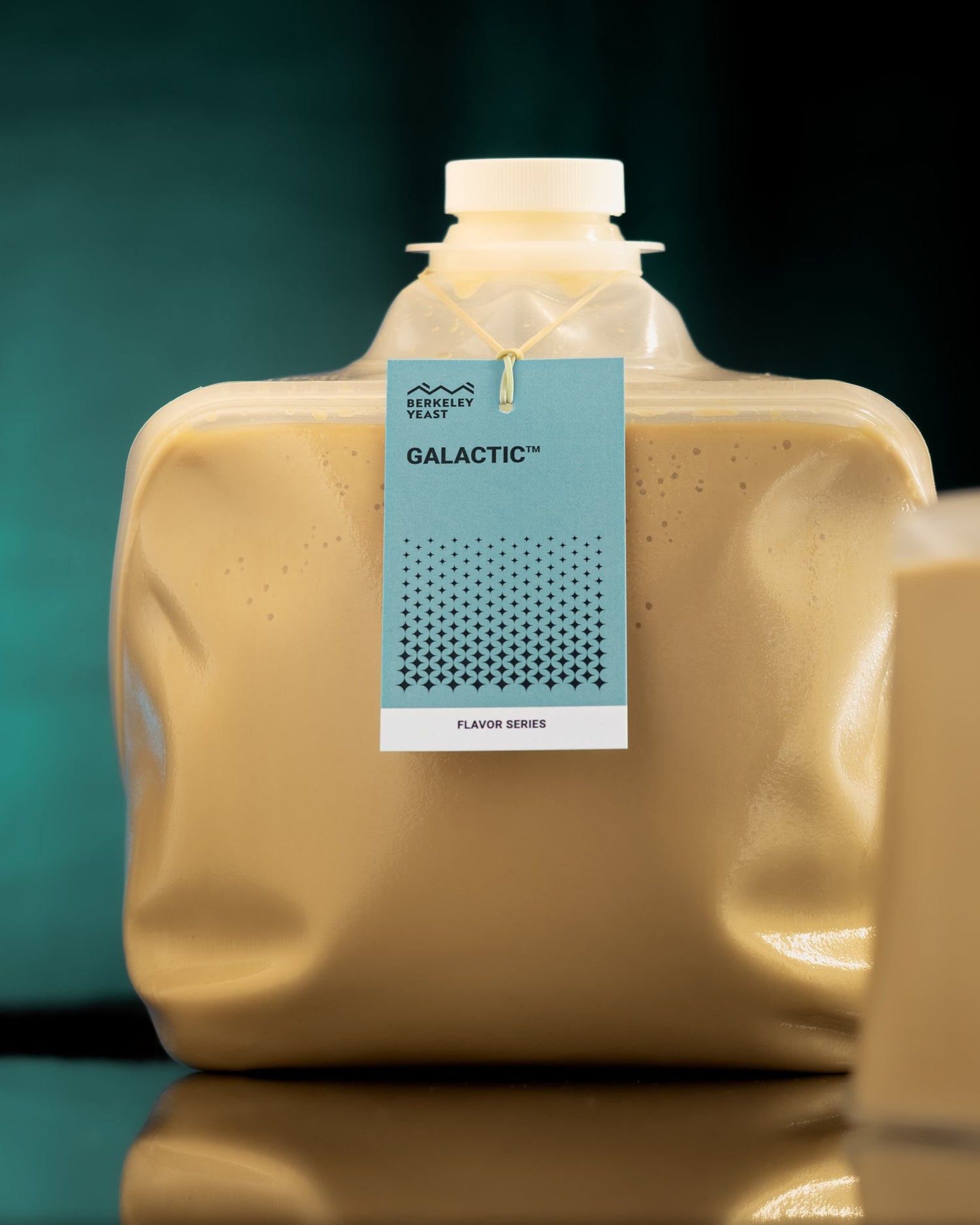About Galactic
Achieve the perfect level of acidity with no off-flavors. Galactic strains produce lactic acid during fermentation, enabling quick-souring in the fermentor—no kettle pasteurization required. This makes sour beer production as cost-effective as brewing standard beer, saving both time and money.
Usage
Galactic can be treated like a standard ale yeast. The one key requirement is that it must be pitched within 48 hours of delivery. Due to its acidic nature, viability decreases quickly during storage.
To produce a beer with a pH of around 3.5, follow the general recommendations below. These provide a solid starting point for achieving balanced acidity. Most brewers stick to these guidelines and get great results. However, ingredients, processes, and equipment can vary—so some experimentation may be necessary.
If you prefer a more acidic beer, adjust the starting pH, pitch rate, aeration, and fermentation temperature. We’ve found that increasing total yeast cell count by encouraging growth leads to a more acidic profile.
To further boost acidity:
- Pre-acidify the wort moderately (no lower than pH 4.9, to avoid inhibiting yeast growth).
- Add acidic fruit or food-grade acids to the fermentor after yeast harvest.
Need help? Our in-house experts are happy to help you fine-tune the process.
General Recommendations
- Knockout pH: 5.0–5.2
- Aeration: 10–12 ppm
- Fermentation Temp: 66–68°F
-
Pitch Rate:
- 750K cells/mL/°P for 10–17°P
- 1.25M cells/mL/°P for 18–20°P
- 1.5M cells/mL/°P for 21–25°P
Recommendations for Increasing Acidity
- Knockout pH: 4.9–5.0
- Aeration: >12 ppm
- Fermentation Temp: 68–72°F
-
Pitch Rate:
- 1.5M cells/mL/°P for 10–20°P
- 2M cells/mL/°P for 21–25°P
- Additives: Phosphoric acid, citric acid, malic acid, lactic acid, and fruit
Repitching
- Harvest yeast just before terminal gravity is reached.
- Repitch within 48 hours of hitting terminal gravity.
- Always check viability before starting the brew day, especially with Galactic strains—low pH and high acid concentrations can significantly affect yeast health.
Extended Storage Methods for Repitching Galactic
Repitching Galactic can be more challenging than with standard yeast. The safest and most effective approach is to harvest immediately at terminal gravity and pitch directly into a fresh tank. However, if storage is necessary, viability should always be checked before reuse, as it may be lower than with non-souring strains.
1. pH Adjustment with Sodium Hydroxide
Raise the pH of the yeast slurry to improve viability during storage:
- Pull a small representative sample of the yeast slurry and measure the pH.
- Slowly titrate with 5M food-grade sodium hydroxide until the pH reaches 4.2–4.5.
- Calculate the total volume of 5M NaOH needed for the full slurry in your brink and add it in two steps: add half, recheck pH, then add the remainder as needed.
- Always wear proper PPE when handling sodium hydroxide. To make the solution, always add base to water, never the reverse—mixing improperly or capping the container before it cools can cause violent reactions or explosion due to heat and pressure buildup.
2. Storage with Buffered Wort
Create a nutrient-rich, buffered environment to maintain yeast health during cold storage:
- Prepare fresh wort and supplement it with dipotassium phosphate (K₂HPO₄) to a final concentration of 4.22 mM.
- Add 0.73 grams of K₂HPO₄ per liter of wort.
- Decant beer off the yeast slurry, then add the buffered wort to the slurry in the brink.
- Ensure the brink is vented or fitted with a blow-off to manage CO₂ pressure.
- Store cold—the yeast will slowly metabolize the sugars, helping to preserve viability.
Always assess viability before starting the brew day.




